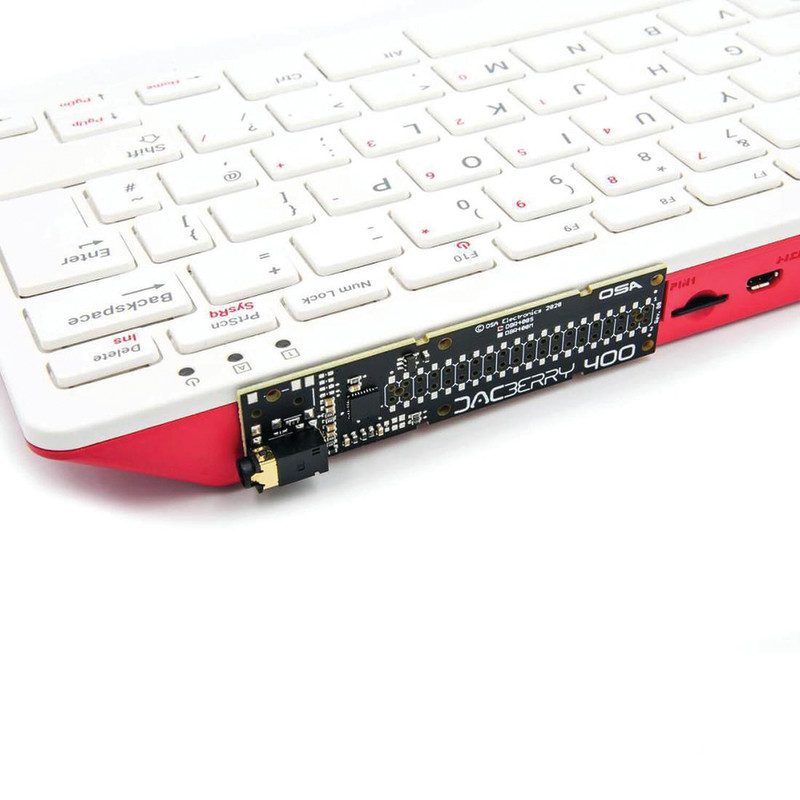
The DACBerry 400 S (£17/$19) fits onto the GPIO header at the rear of Raspberry Pi 400. While it’s fairly obvious which way up the board should go, care needs to be taken to line up its header with the GPIO pins correctly – with a small gap showing at the Pin 1 end.
Get the alignment wrong and not only will you get no sound, but you may damage the board. This is something manufacturer OSA Electronics will be addressing in the second batch of boards, by introducing a small bump in the middle, to line up with a notch in the GPIO header surround.
DACBerry 400 S: Let there be sound
A one-line Terminal command installs the software needed to drive the DACBerry 400 S. At the time of writing, this required the earlier ‚buster‘ version of Raspberry Pi OS, but it should be available in Bullseye soon. After rebooting, the audio will be routed through the DACBerry – with Raspberry Pi 400’s audio chip disabled, so it’s not easy to switch back if needed. It also works with OSMC and LibreELEC, among other OSes.
The line-out audio signal is strong enough for decent volume on connected headphones, or you can use powered speakers or an amp. The sound quality is very good with a nice warm tone and strong bass, possibly due to DSP’s integrated low-pass filter. The audio can be adjusted using the numerous settings in alsamixer, but OSA plans to introduce a GUI-based tool for this.
A bonus is the ability to connect a microphone for recording, using the same 3.5 mm socket – OSA is also planning another DACBerry 400 model with a separate mic socket.
DACBerry 400S verdict
If you need a separate audio output (and/or mic input) for your Raspberry Pi 400, this provides one at little cost.
8/10

